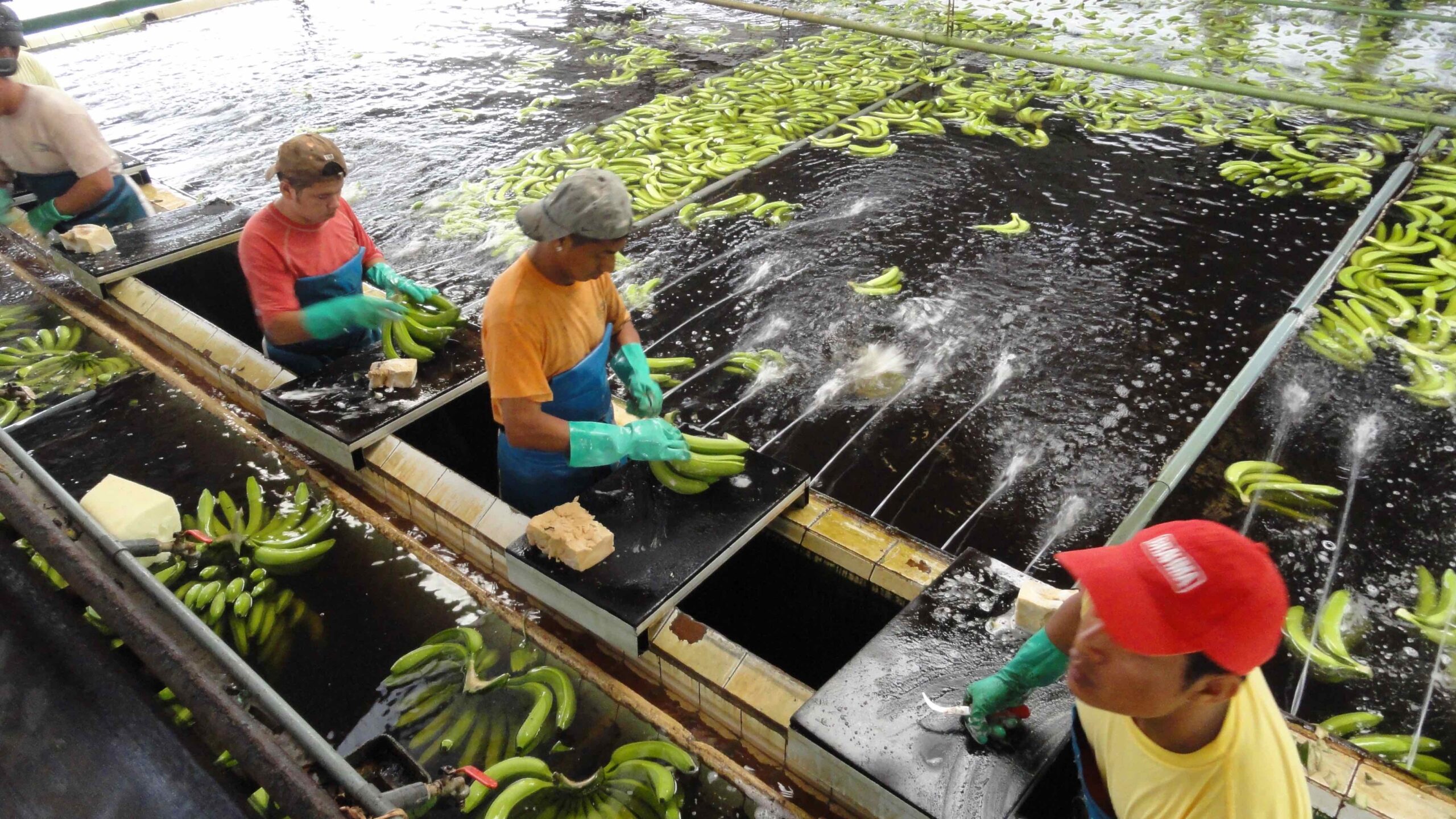The United States is the world’s second largest export destination for agricultural goods after China. The impending U.S. longshoreman and port operator strike—likely to begin at midnight September 30 barring a last-minute resolution—could have significant consequences for developing countries, particularly for those that typically ship a majority of exports to ports on the U.S. East and Gulf of Mexico Coasts where the strikes will be targeted.
The strikes will also disrupt U.S. agricultural exports, and while the quantity of trade affected will likely be less than that for imports, it will have important consequences, particularly for those importing countries that depend on U.S. supplies of those products. This post briefly reviews what is at stake for developing countries if the strikes are prolonged.
What ports are potentially affected?
Ports on the East and Gulf Coasts are bracing for what would be the first major dock strike since 1977. Negotiations between the International Longshoremen’s Association (ILA) and United States Maritime Alliance (USMX), which represents ports, container carriers, and other industry players, have been stalled since June, and barring an agreement, thousands of dockworkers are preparing to walk off their jobs when their contract expires at midnight on September 30.
An estimated 25,000 port workers could be affected from Portland, Maine to Houston, Texas along the Atlantic seaboard and Gulf of Mexico. The Biden administration has called for dockworkers and port operators to return to the bargaining table as time runs short to avoid a strike.
How much U.S. agricultural trade would be affected?
The United States imported a record $196 billion of agricultural goods in calendar year 2023 (Figure 1). U.S. agricultural imports have grown steadily over the past 25 years, with an annual growth rate of over 6%. Over 43% of imports came through East and Gulf Coasts in 2023. U.S. agricultural exports exceeded $174 billion in 2023, of which 38% went through the East and Gulf Coast ports.
Figure 1
The strike will mostly affect containerized trade (Figure 2). Bulk commodities such as corn and wheat are likely to be less affected, since much of the grain is loaded onto ship from non-unionized grain loading facilities. Most agricultural imports and exports transiting through ports on the East Coast are containerized and are likely be affected, while Gulf Coast ports handle more bulk commodities (particularly on the export side) and may be less impacted. For example, of the $16.8 billion in agricultural exports transiting through New Orleans in 2023, only $700 million was in containers.
Figure 2
Impact of the strike on imports
In 2023, the top 15 U.S. import products totaled almost $120 billion in value (Figure 3). Over 41% of that transited through ports that would be affected by the strike. Processed fruits and vegetables are the largest category ($5.3 billion), but in terms of percent of imports, over 89% of essential oils, 77% of unroasted coffee, 71% percent of wine and 64% of sugar and dairy products were imported through ports potentially affected by the strike. By contrast, a relatively small percentage of fresh fruits and vegetables would be affected, since most of those products enter the country either from ports on the West Coast or overland from Mexico and Canada.
Figure 3
For the two largest U.S. suppliers, Mexico and Canada, only a small portion of exports would be affected by the strike (Figure 4). In 2023, less than 3% of Canada’s agricultural exports and less than 6% of Mexican exports arrived by vessel. Most is shipped overland by truck and train. By contrast, between 70% and 80% of trade from the European Union is shipped to the East and Gulf Coasts. Other regions exporting to the U.S. that are disproportionately affected include South America, sub-Saharan Africa, and selected countries in Asia.
Figure 4
As example of how the strike could affect imports, consider bananas. In 2023, U.S. banana imports totaled $2.7 billion, 95% of which arrived via vessel—with almost 76% of those entering through East and Gulf Coast ports (Figure 5). Take the specific case of Guatemala: In 2023, about 86% of that country’s banana exports went to the U.S., and about 78% of those went to East and Gulf Coast ports (the remainder was exported out of Guatemala’s ports on the Pacific Ocean to ports on the U.S. West Coast). Likewise, Ecuador, Costa Rica, Colombia, and Honduras were highly dependent on U.S. East and Gulf Coast ports for their banana exports. As with fruits and vegetables in general, much of Mexico’s banana exports—about 60%—enters the U.S. overland by truck or train, while 35% enters by vessel to West Coast ports and about 5% to East and Gulf Coast ports.
Figure 5
The magnitude of potential losses will depend on the length of the strike. Like other perishables, bananas have a relatively short shelf life even with refrigeration. Some bananas could be shipped to West Coast ports, but some of the additional transportation costs will likely be borne by suppliers in the form of lower prices. (Consumers will also feel the costs through higher grocery prices, particularly the Eastern U.S.
Impacts of the strike on developing country importers
The strike will likely be less consequential for developing countries that import agricultural goods from the U.S., largely because a high proportion of U.S. exports are bulk commodities such as wheat, maize and soybeans typically transported on specialized bulk carriers loaded and unloaded at dedicated facilities that often operate with non-ILA unions or independent workforces. Second, a good portion of U.S. exports ship overland to Mexico and Canada (via truck and train) and through ports on the West Coast. A recent study by the American Farm Bureau Federation estimates that approximately 14% of all U.S. waterborne agricultural exports, by volume, would be at risk in the event of an ILA strike.
However, disruptions in U.S. meat, dairy, and poultry exports (Figure 6) are potentially more problematic. Exports of beef, pork, poultry, dairy and eggs to developing countries (excluding Mexico) totaled $14.3 billion in 2023, with about 52% moving through ports on the East and Gulf Coast. Poultry and egg exports are particularly vulnerable given the proximity of egg and poultry production to those ports.
Figure 6
Importing countries could begin to feel the impact of the strike within weeks—depending on inventories and alternative suppliers. A prolonged strike would force importers to seek alternative supplies, either from West Coast ports or other countries. Some of the costs of higher transport costs would be borne by importers (through higher prices). U.S. producers would also lose through lower prices.
Implications
The severity of these impacts will depend on the duration of the strike. The 1977 port strike lasted seven weeks. For developing countries that export agricultural goods to the U.S. it is a matter of geography—another prolonged stoppage would pose the most problems for those shipping to the U.S. through the affected ports. Importers of U.S. agricultural goods will be less affected, though for certain products (meats, dairy and other perishables) a prolonged strike could pose supply issues and force importers to seek alternative suppliers.
Joseph Glauber is a Senior Research Fellow with IFPRI's Markets, Trade, and Institutions Unit. Opinions are the author's.







